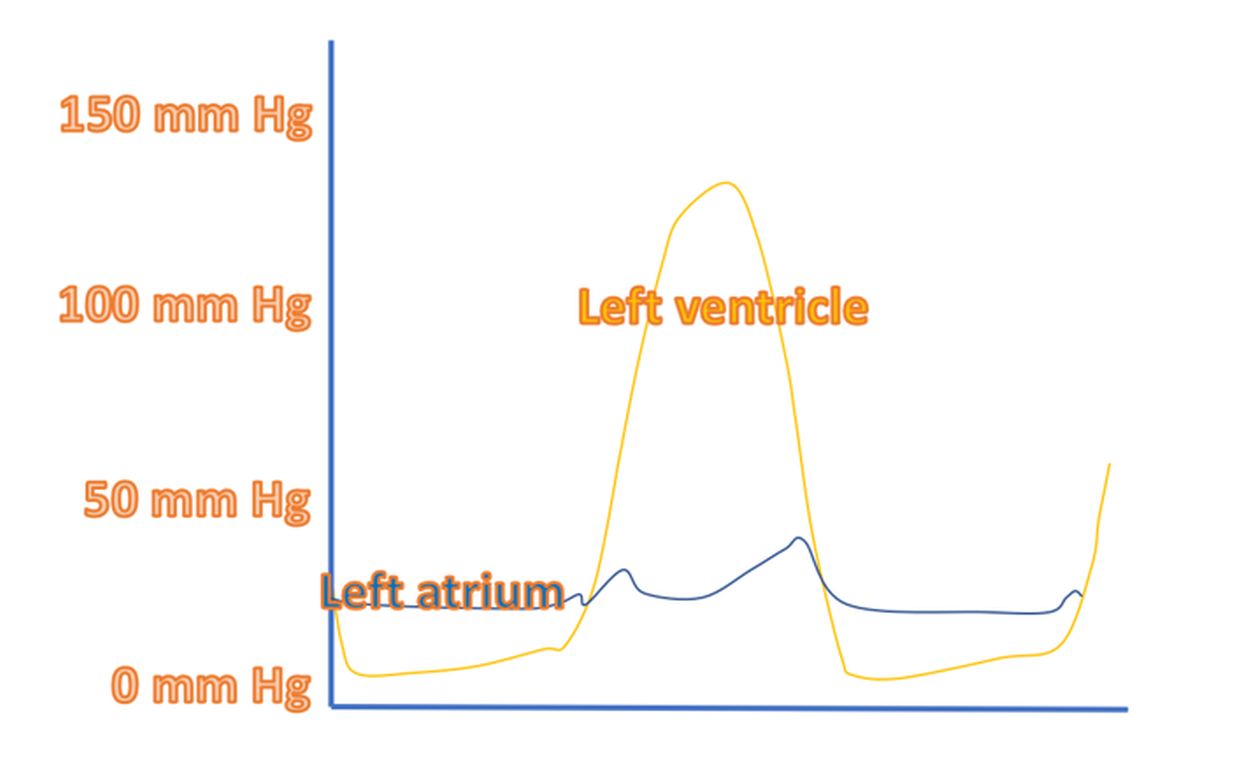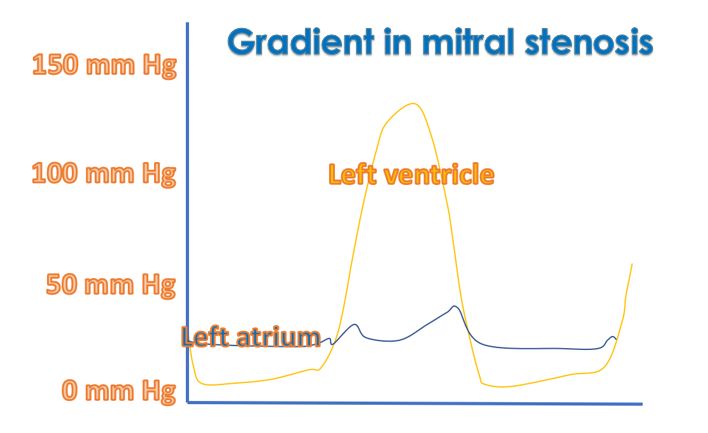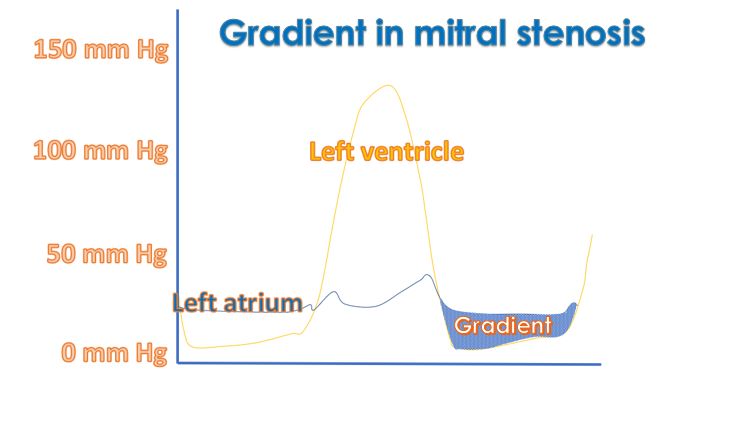Hemodynamic quiz 2
Hemodynamic quiz 2
Here are the simultaneous pressure tracings from the left ventricle and left atrium. What is the interpretation?

In diastole, the left atrial tracing can be seen at a higher level than the left ventricular tracing, indicating a transmitral gradient. Normally, there is hardly any gradient when the mitral valve is open. So, in this case there is mitral stenosis, elevating the left atrial pressure.

Mean gradient across the mitral valve can be calculated using the electronic caliper and will give an assessment of the severity of mitral stenosis. Higher the gradient, more the severity of mitral stenosis.

Earlier it used to be calculated using a manual planimeter on a print out the tracings on graph paper. The tracings were enlarged by changing the scale of recording so that errors could be reduced.

Most often, instead of left atrial tracing, pulmonary artery wedge tracings were used as a surrogate of left atrial pressure. But a delay in transmission with phase shift could overestimate the transmitral gradient in that case.
Here is the reference on phase shift causing higher gradient when pulmonary artery wedge tracing is used:
1.Nishimura RA, Carabello BA. Hemodynamics in the cardiac catheterization laboratory of the 21st century. Circulation. 2012 May 1;125(17):2138-50.



